Cacao vs cocoa – is there really such a big difference? And can they be used interchangeably? Here’s everything you need to know.
Let’s start off by looking at the three types of cocoa and cacao powders.
Natural cocoa powder
Natural cocoa powder is the standard type in the US. It’s 100% cocoa powder and doesn’t have additives.
Hershey’s, Nestle and most US store-brands are natural cocoa powder. Note that Hershey’s Special Dark is Dutch-process.
Dutch-process cocoa powder
Some cocoa powder is also processed with alkali, which makes it less bitter and darker in taste and color than natural cocoa powder. Potassium carbonate, which is a white salt, is usually used in this process.
This type is known as Dutch-process, Dutched, European style, alkalized or sometimes it just says “processed with alkali.” Some brands don’t use any of those terms. More on that below!
Black cocoa powder is a form of cocoa powder that’s been super-Dutched. It’s a bit different than regular Dutch-process cocoa, though. So everything I say below refers to regular Dutch-process and not black cocoa powder.
Cacao powder
Cacao powder is made from cacao beans that have been fermented, but not roasted. That maintains the beans’ nutritionally dense properties.
Some recipes list cocoa or cacao powder in the ingredients list as if they’re interchangeable. But they aren’t really – especially in baked recipes!
Cocoa vs cacao
The primary difference between cocoa and cacao is the processing levels that each one undergoes. To gain a better understanding, it becomes important to know the way cacao is grown.
The cacao tree is a small evergreen that typically grows from 15 to 25 feet tall. The fruit, better known as pods, grow from the trunk and large branches and measure 4 to 12 inches in length.
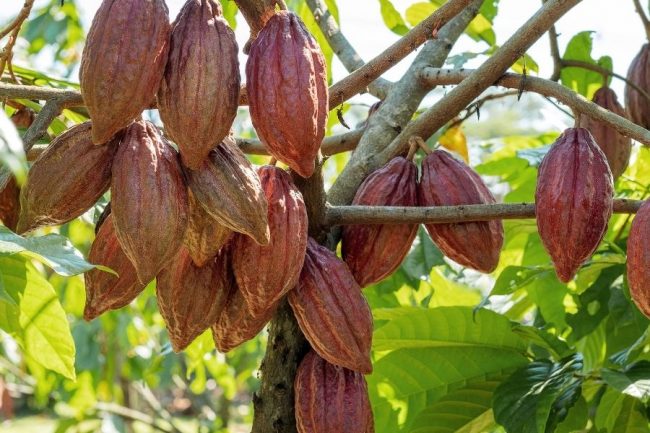
Inside these pods are between 20 to 60 reddish-brown beans (they are actually the seeds, but often referred to as beans), that are around an inch in length.
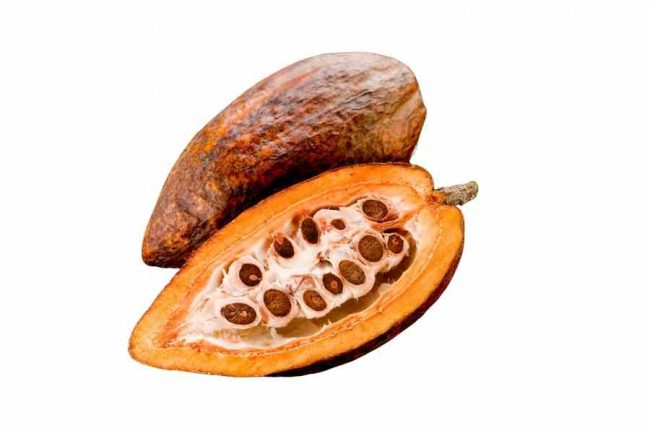
The cacao beans are where the cacao powder, cocoa powder and cocoa butter are sourced from. But to make the beans edible, they first have to undergo processing.
I did find a few companies selling unprocessed cacao beans. I’ve never had them myself, but apparently, they have just a slight cocoa flavor, are very hard to eat, and some sources call them unpalatable.
How are cocoa and cacao processed?
The beans from the cacao pods are dried, then fermented, and finally roasted at a high temperature to produce cocoa powder.
When these beans undergo this process, the fat in the beans separates. This is cocoa butter!
And this is the base ingredient used to make chocolate and also the ingredient that gives the chocolate a velvety and rich mouthfeel.
The dry solids that are left behind from this process are turned into cocoa powder by grinding the solids into a powdery form.
The cacao beans that are processed at high temperatures are turned into cocoa powder. But when the beans aren’t roasted at all, you get cacao.
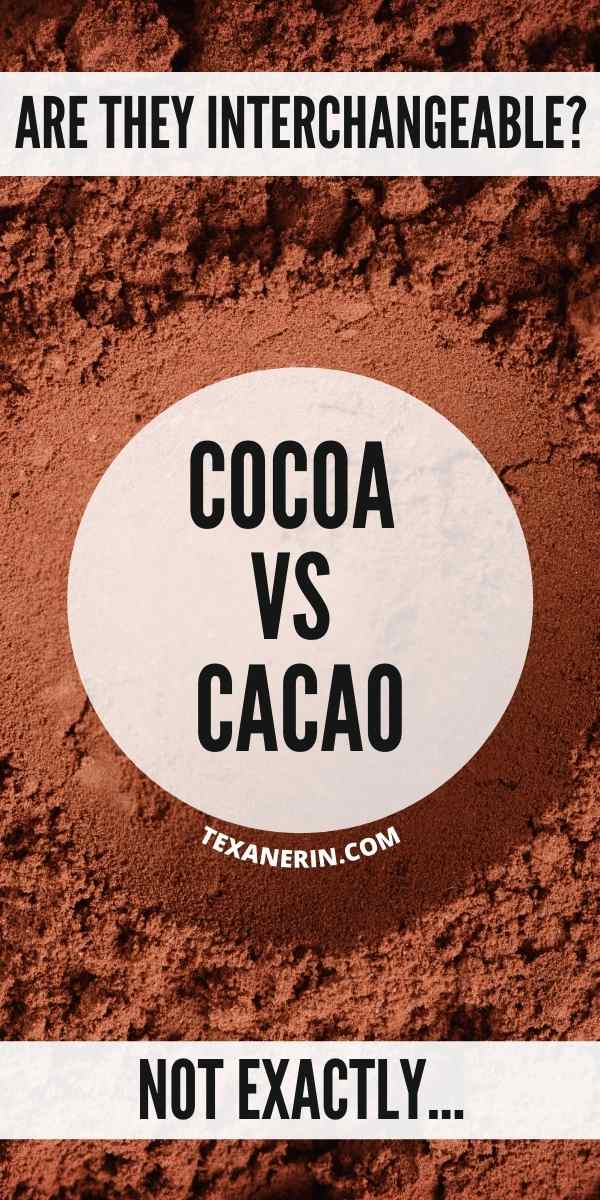
Is cacao healthier?
Cocoa powder is definitely healthy – until you go and start adding a bunch of sugar.
But cacao powder is even more nutritionally dense and is higher in flavonoids, antioxidants, and minerals such as fiber, protein, iron, and magnesium.
The high temperatures needed to process cocoa powder destroy a lot of those healthful properties.
I can’t find any studies on whether or not baking with raw cacao powder destroys those properties, but if roasting cacao beans at temperatures around 300-375 °F (150-190 °C) would destroy them, why wouldn’t baking at 350 °F (175 °C)?
It seems common sense to me, but I did find some people arguing over this point.
Is raw cacao actually a good thing?
For a different viewpoint on raw chocolate, I came across this interesting article. She talks about how a lot of “raw” chocolate and cacao probably aren’t really, truly raw.
One reason is that when cacao beans are fermented, the temperature typically goes over what’s considered raw. By the way, there’s not even a legal standard or agreement over what counts as raw. So anyone can market anything as raw.
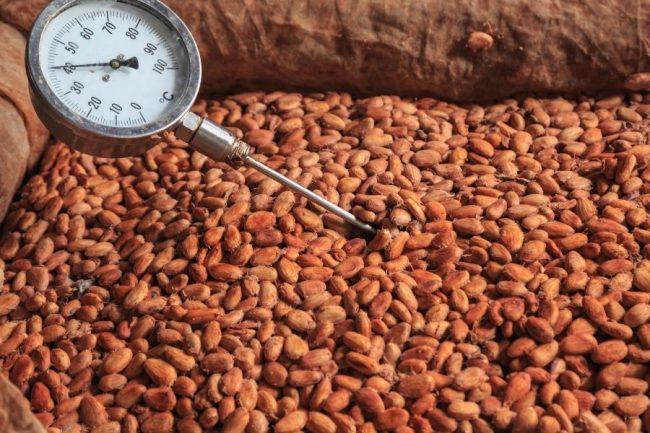
When I searched Amazon for non-fermented cacao powder, nothing came up but products that don’t mention anything about fermentation. But I did find this Non-fermented Cacao Powder from Wildly Organic on their website.
It seems as though most raw cacao powders have indeed been fermented, but because they’re not roasted after fermenting, the companies are still going with the term raw.
Also mentioned in the article above – if we saw the way raw cacao beans were treated where they’re grown, we wouldn’t want to eat them, anyway. Cacao beans are often dried on the ground, leaving lots of possibility for contamination. Bugs. Poop. Whatever.
Roasting the beans kills mold and bacteria.
This article also has some interesting quotes from a chocolate company owner on how “raw cacao” actually isn’t raw due to the fermentation process.
And here’s another viewpoint from one of my readers! You can view her whole comment here.
Here’s part of it. Lisa said:
“One thing that has been proven, time and time again is that many foods, especially plant foods and their nutrients, cannot be accessed without cooking or other methods of processing, such as soaking in water or other nontoxic substances. Plants have many defences against being eaten by humans and animals, those defences prevent the human body from utilizing all those nutrients. So even if the “raw” cacao has more nutrients, it’s improbable anyone eating it in its raw state is even able to utilize any of them.”
I find her whole comment super interesting. Those points never came up during my cacao/cocoa research and I spent several full days working on this post. Thank you, Lisa!
Too bad I’m left with several kilos of cacao I bought for experimenting. I don’t even like the taste. 😬
Can you substitute cacao for cocoa?
Are they 100% interchangeable? Definitely not, despite what you may read elsewhere.
It really depends on the type of recipe. Sometimes it’s okay – but not ideal, and sometimes it just won’t work at all. I go into detail below with lots of examples from my favorite chocolate recipes!
Cacao = more bitter.
Since cacao powder undergoes less processing than cocoa, it’s also more bitter. So you need to add more sweetener when using cacao in place of cocoa powder.
- In my Vegan Gelato recipe, you need to use 33% more sugar if using cacao rather than cocoa powder. I’m working on a chocolate recipe, and in that, I use at least 33% more sweetener.
Sometimes more. It depends on the brand of cacao.
In both recipes, the flavor is very different. I don’t really like either of them with cacao. - If you’re baking something, you can’t just dump in 33% more sweetener and expect it to come out the same. If it’s an already moist cake, like my Vegan Chocolate Cake or Gluten-free Chocolate Cake, then it likely won’t even bake through. Sugar = moisture and I doubt the cake could handle even more.
I just tried out the gluten-free chocolate cake (in cupcake form) with cacao powder. I didn’t make any other changes – I just subbed in cacao powder for Dutch-process.
I’ve made this cake dozens of times over the past 15 years so I’m super aware of how the taste and texture should be.
The cupcakes are shockingly not very sweet for the amount of sugar in them, and they were a lot drier than they’re supposed to be.
They were quite starchy hot out of the oven, and they got a little less starchy, but the starchiness never totally disappeared.
So that was a fail! With Dutch-process, they’re the best chocolate cupcakes I’ve ever had.
With cacao, I didn’t even feel they were good enough to share with other people. Out of all my experiments with cacao, I feel that these came out the best, which is kind of weird.
I couldn’t tell you how much extra liquid to add without experimenting myself. But it’s not worth the trouble because once that raw cacao goes in the oven, it’s no longer raw and the health benefits are done for.
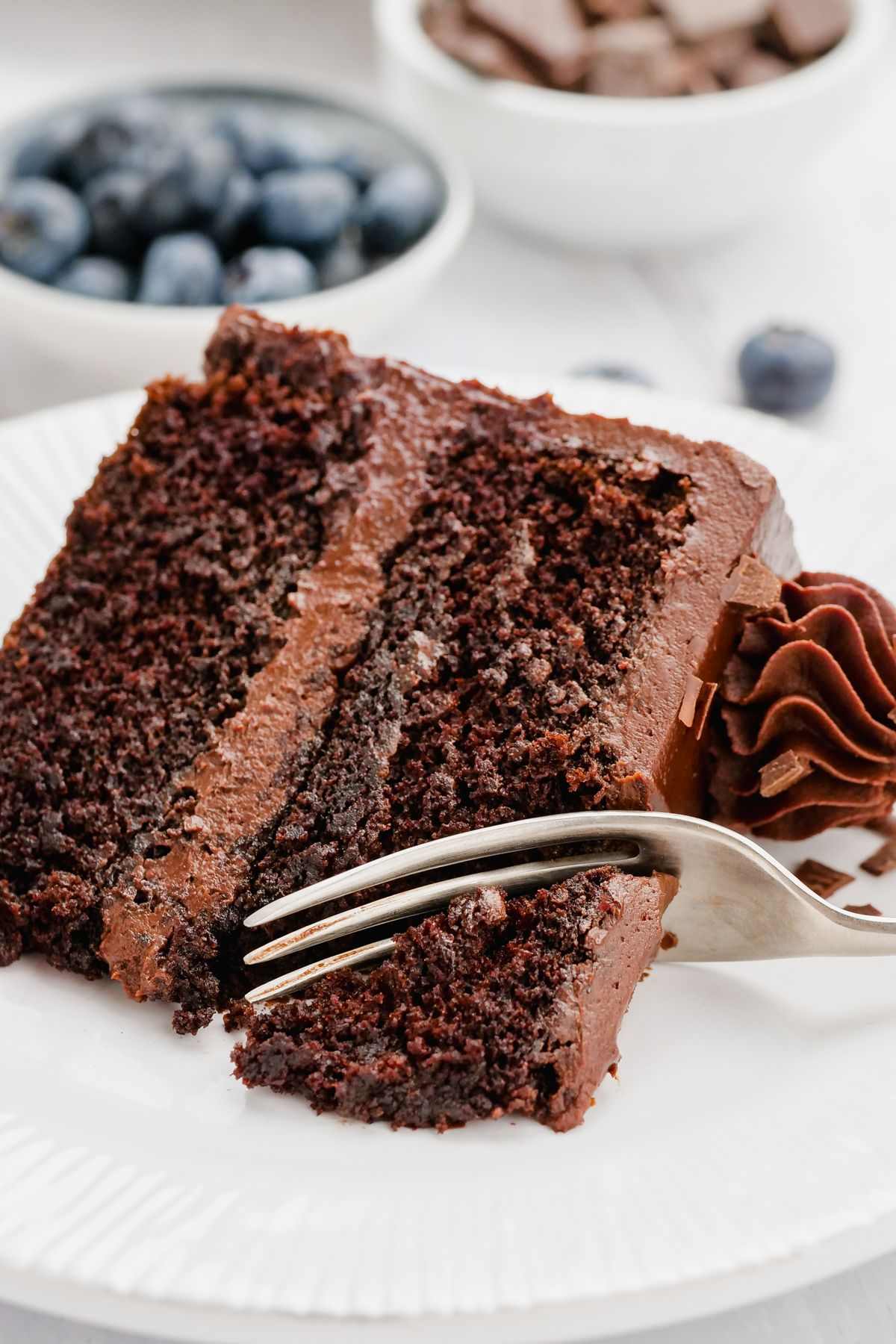
- If you’re making cookies – you might end up with a large puddle of baked cookie dough if you add 33% extra sugar/moisture.
- If you’re making brownies or really anything else – it’s like with the cake. It’s unlikely that whatever you’re making will bake through properly when you add so much extra sugar. You can of course just keep the sugar amount the same for a more lightly-sweetened version, but then your final product will be much drier than it’s supposed to be.
- If you’re making something non-bake like this Chocolate Chia Pudding, the added moisture might make a difference. If there’s too much liquid, it won’t set properly. So for that recipe, I’d probably add 3-4 tablespoons more maple and then reduce the coconut milk by 3-4 teaspoons because maple syrup is 33% water and 67% sugar.
In my chocolate overnight oats (recipe coming soon), I use about 25% more maple syrup. There’s a definite taste difference, but it’s not bad. Just different. - In this Paleo Fudge recipe, you freeze the fudge to firm it up. And it has to stay frozen to stay firm.
So if you add extra maple, it still holds its shape because it’s frozen anyway, but it is less creamy with the extra liquid.
For this recipe, I started off by adding less cacao called for than cocoa powder. The chocolate taste was not as strong. So I ended up adding the full amount of cocoa powder called for.
But then it wasn’t sweet enough and I ended up adding 42% more maple syrup (I might have gone a little overboard, but not by much). It is softer in the freezer than the original version and not nearly as chocolaty as when made with Dutch-process cocoa powder.
I much prefer the cocoa powder version of this recipe. - In my Vegan Fudge recipe, which is solid at room temperature, adding extra maple syrup would likely cause it not to be solid at room temp.
In drinks like my Paleo Vegan Hot Chocolate or Chocolate Avocado Smoothie, the added sweeter won’t make a noticeable difference. It’ll make the fat percentage go down, making it a teeny tiny less creamy, but I doubt anyone would notice.
I did try cacao in my Vegan Hot Chocolate recipe. I added 33% more sugar and I didn’t like it at all. It was SO bad that I didn’t even try to fix it.
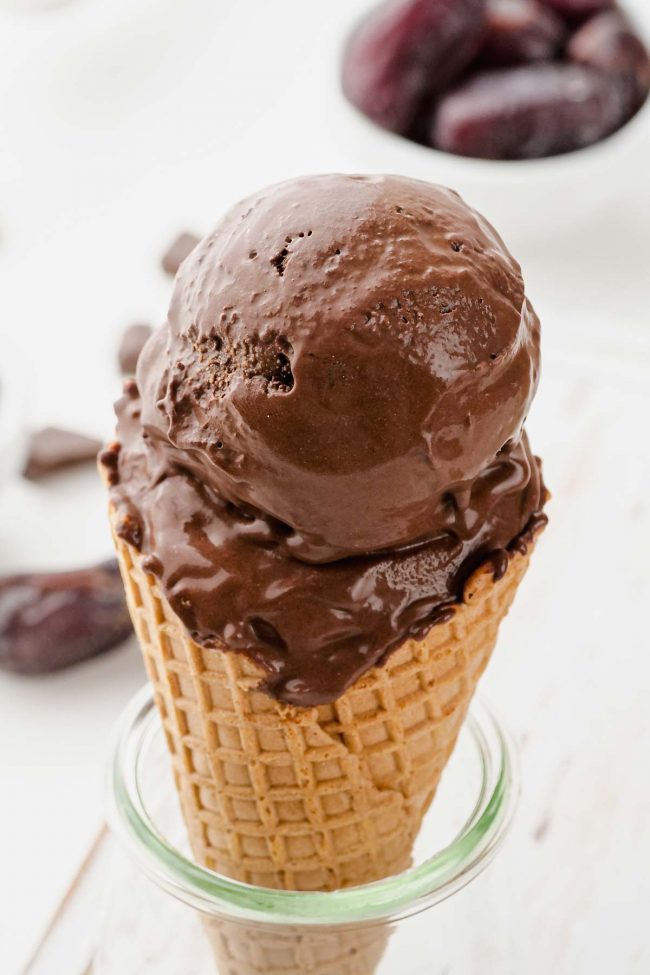
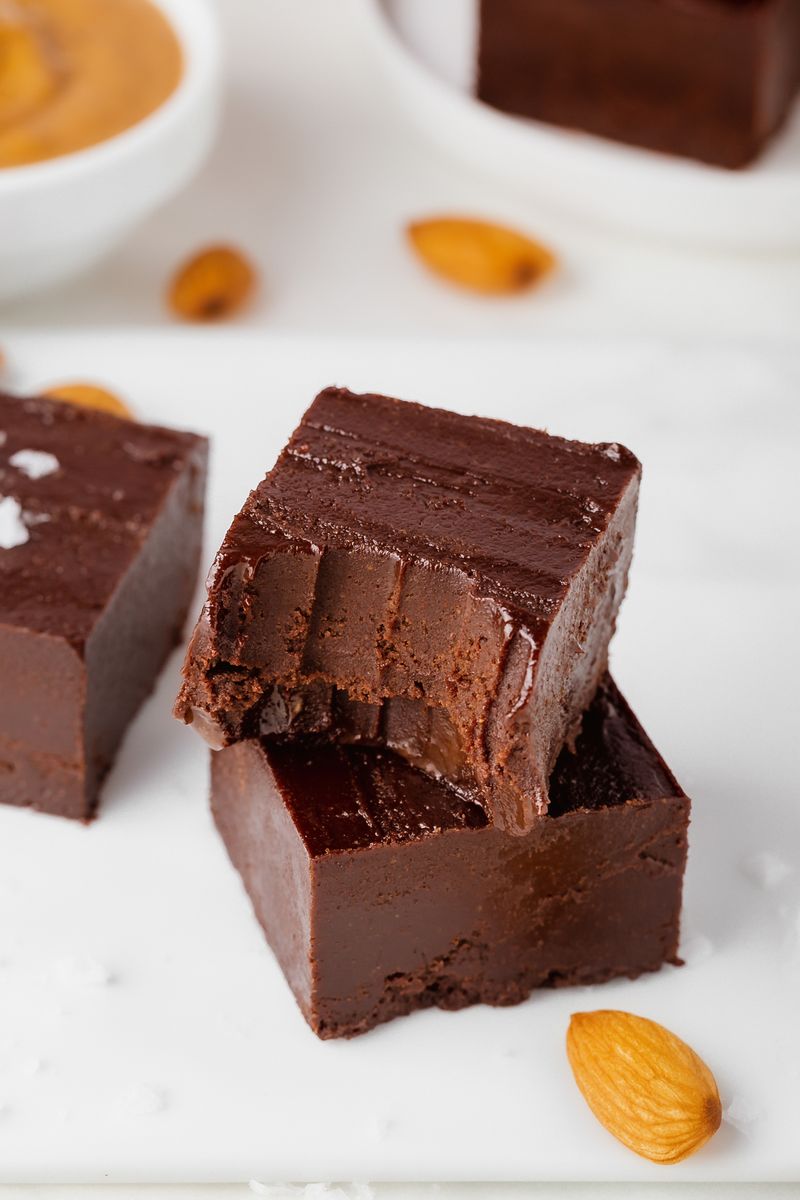
Cacao = more absorbent.
Cacao contains higher levels of starch when compared to cocoa powder. This characteristic makes cacao powder more absorbent, which may mean that you might need to add more liquid to your baked goods to prevent them from drying out.
In cakes, you’ll likely notice a difference if you don’t add extra liquid. In some super gooey recipes, like these Almond Flour Brownies, you might not notice (unless you’re already familiar with the recipe) because they are so insanely gooey.
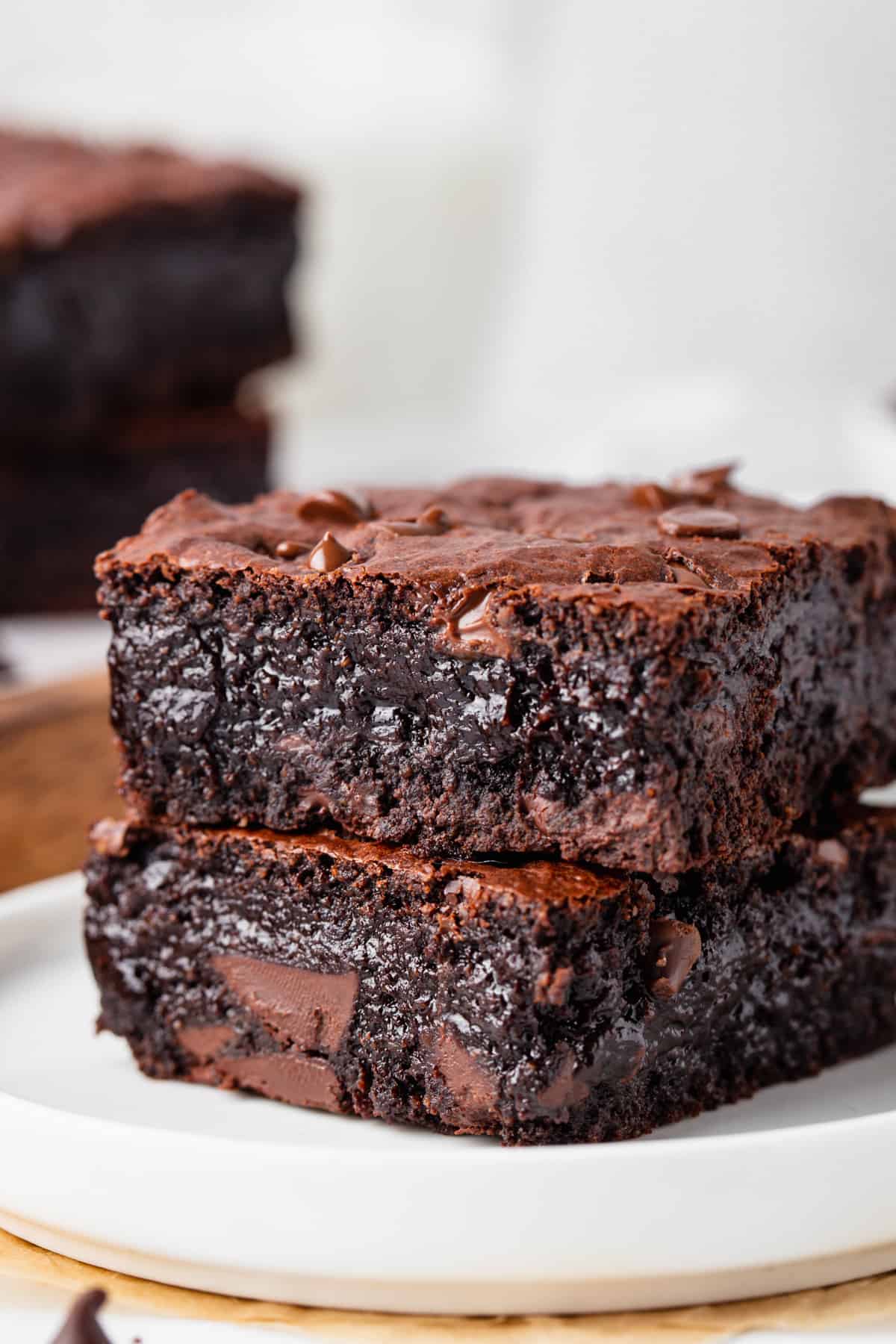
I go into detail as to why just adding extra liquid is a bad idea down below.
Cacao = stronger chocolate flavor? Hmm…
Everything I’ve read says that cacao powder has a stronger chocolate taste than cocoa powder.
They must all be referring to natural cocoa powder (like Hershey’s), because in my experience, Dutch-process cocoa powder has a stronger chocolate flavor than cacao powder.
To me, cacao powder is more fruity and floral. In my opinion, it’s more like a cross between carob powder and Dutch-process cocoa powder.
Dutch-process (again, to me – we might have different opinions!) is pure chocolate flavor.
Not all cacao is created equal
So this is true of any product. Some brands are just better than others. But I find it especially true of cacao powder.
Some taste a bit too reminiscent of dirt for my liking.
For the recipe experiments in this post, I used 4 different brands of cacao powder. I researched them well to find “the best” brands so I doubt that I just got “bad” brands of cacao.
I recommend reading product reviews on Amazon.
I don’t live in the US, so I haven’t tried these myself, but here are the highest rated:
- Viva Naturals Organic – but it’s not raw. Their customer support said, “Our Cacao Powder is lightly roasted during the production to a maximum temperature of 117 degrees Fahrenheit. This helps to remove some of the bitterness found in raw cacao, however due to this, our Cacao Powder cannot be considered raw.”
- Navitas Organics – a customer rep says, “Navitas Organics non-GMO Cacao is naturally fermented and low temperature dried, never roasted or alkalized. We minimally process all of our foods and use the least invasive methods possible in the interest of maintaining the inherent superfood nutrients within the food.”
But that actually doesn’t tell us if it’s really raw or not. The temperature during natural fermenting can easily go over raw levels. - Terrasoul Superfoods – They say, “In order to preserve the complex flavor profile and health benefits, the beans are carefully harvested, fermented, sun-dried, and cold-pressed, and never roasted.”
But again, this tells us nothing about the temperature during the fermenting process.
I didn’t find any brands that specifically say they stay under raw levels during the fermentation process.
If you know of one, or you use a brand of cacao powder that tastes just as chocolaty as Dutch-process, please let me know in the comments! I’d love to try it out.
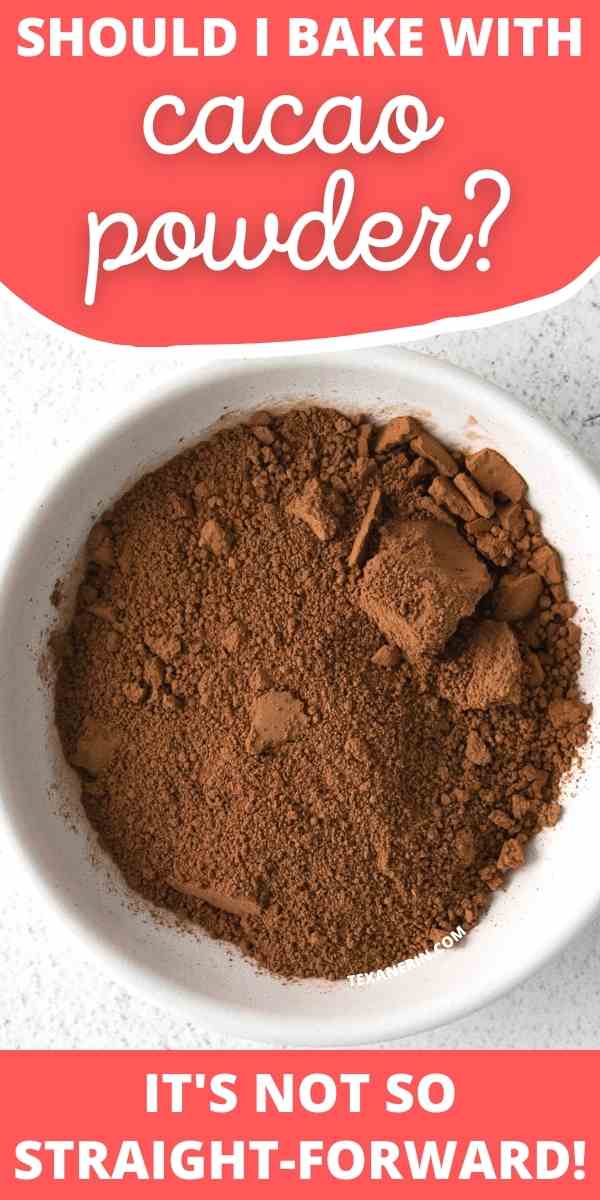
So, should I not bake with it?
Unless a recipe specifically calls for cacao powder, I would highly recommend that you use cocoa powder.
Not only are there the bitter and absorbency issues I mentioned above, but if you bake a recipe with it, you’re negating the benefits of using cacao powder (because the cacao is no longer raw once you put it in a hot oven).
Cacao powder is also much more expensive than cocoa powder, making it really a waste to bake with.
So if you’re baking, I would always suggest using cocoa powder. And to be more exact, Dutch-process cocoa powder because of the stronger chocolate flavor.
Many sources will tell you not to use Dutch-process in place of natural cocoa powder, but I always do and have yet to run into issues. You shouldn’t use it in red velvet cake, though.
I’ve read some people saying to just use less cacao if using it in place of cocoa powder and to increase all the liquid measurements. This is kind of ridiculous advice (sorry!) because baking is a science.
I test some of my recipes dozens of times to get them perfect. You can’t just add less cacao by some unspecified amount and increase the liquid by some unspecified amount until the consistency looks right. How would you know it’s right until it’s been baked?!
This whole idea makes me shudder. 😂
And like I said above, when you use less cacao powder in place of cocoa powder, the chocolate flavor isn’t strong enough.
It could be that you use cacao in place of cocoa, using the same amount and making no changes, and it works out okay. But it won’t have the same flavor – that’s for sure.
Important note! If I haven’t convinced you, and you still decide to use cacao in place of cocoa, I recommend going by weight rather than using volume (so, grams instead of measuring cups). So if a recipe calls for 1 cup (115 grams) of cocoa powder, use 115 grams of cacao powder. Not one cup.
It’s a bit puzzling to me, but 1 cup of cacao weighs around 85 grams. Dutch-process cocoa powder weighs 115 grams. I measured 4 brands of cacao powder and got around 80-90 each time.
I tried the recipes using the volume measurement first, and the chocolate flavor was not very strong. If you go by weight, the chocolate intensity is better.
Live in Europe?
I live in Germany, and all the cocoa powder at the grocery store is Dutch-process, although it’s not labeled as such. I always get store-brand, from any and every store, and it’s always amazing.
I know cocoa powder is usually Dutch-process in Europe, but the UK is sometimes an exception with this kind of stuff. So I did some googling and found that Tesco and Sainsbury’s store-brands are natural. Aldi, Asda and Lidl are Dutch-process.
And the only way I knew that was because it says potassium carbonate on the packaging of the Dutch-process cocoas!
Cocoa is sometimes labeled as cacao
To make things even more confusing, some brands label their cocoa powder as cacao – even when they clearly state that their product is Dutch-process cocoa powder or natural cocoa powder.
You can see in the photo below that the Hershey’s box says, “Hershey’s Cocoa: 100% Cacao Natural Unsweetened.”
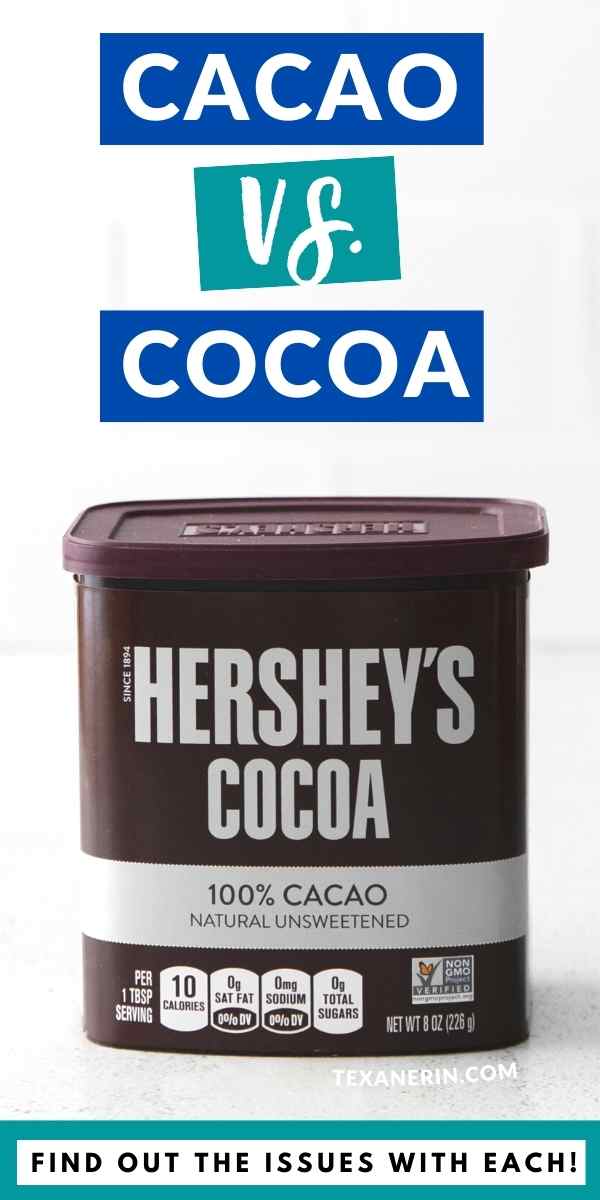
And in languages other than English, there’s often just one word for both cacao and cocoa. In Swedish and German, for example, you’ve just got kakao. And you have to read the packaging to figure out if it’s cocoa or cacao.
How can you tell if it’s cocoa or cacao?
If it says “processed with alkali” – it’s Dutch-process. Sometimes it just lists something like potassium/sodium hydroxide or potassium/sodium carbonate where the ingredients are listed.
If it says cocoa, but doesn’t mention alkali or any of those other Dutch-process keywords, then it’s natural cocoa.
If the product is labeled as cacao, then it’s most likely made from unroasted cacao beans. Ideally, it’d also be labeled as cacao powder instead of cocoa, but as I mentioned above, some brands don’t really label their products correctly and lots of other languages just call both kakao.
If it says “raw” on there, it’s cacao powder. Cacao is much more expensive than cocoa powder, so they’d want to justify the higher price by making it clear that it’s raw cacao powder.
But still, some brands don’t. If you look at the product reviews on Amazon and search for raw, you should find it in the product description.
If you don’t, check the customer questions section. You can search there for “raw.”
Something else tricky some companies do is write “made from raw cacao beans.” ALL cocoa and cacao powder starts from raw cacao beans. So that is meaningless.
If it’s cacao, then it’d make more sense to write “made from unroasted cacao beans.” Who knew that buying cacao would require so much analysis and deciphering!
Is cacao powder better?
It depends on what you value. If you’re a raw vegan, then “raw” cacao is the way to go. It’s also certainly healthier – if you can look past that mold and bacteria thing. AND if you can find cacao that’s actually really raw, meaning the temperature doesn’t go over raw levels during fermentation.
If you want to use as little sweetener as possible, then cocoa powder is better. And for the most chocolate flavor, Dutch-process is what you want.
If you’re now wondering what the difference is between cacao butter and cocoa butter is, check this out → Cacao Butter vs. Cocoa Butter
I hope this cleared up any questions you may have had on the differences between cocoa and cacao! If you have more, leave a comment below, and I’ll do my best to get some answers. :)
Sources:
https://www.confectionerynews.com/Article/2014/07/16/Raw-chocolate-a-Salmonella-health-risk-says-NCA
https://pubmed.ncbi.nlm.nih.gov/24667314/
https://chocolatealchemy.com/the-truth-about-raw-chocolate






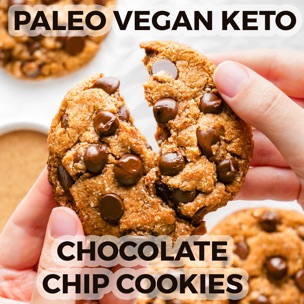
7 comments on “Cacao vs Cocoa” — Add one!
3 comments are awaiting moderation!
Is Cacao or Cocoa Powder better than Coffee?? I have read that these powder is better alternative to coffee which has caffeine and impacts the nervous system.
Thank you for this! I wasn’t using cacao for it’s health benefits, I just really like the flavor of the cacao. But I do use the cacao in my coffee drinks and hot chocolate. I will definitely get some dutch process cocoa in the near future. This will be a guide I come back to over and over and over again.
You’re welcome! Sorry it took a while to write. What brand of cacao powder do you use? Is that what you normally use in my chocolate recipes? Or just that one from a few months ago where you said it was bitter? I hope the recipes won’t be too sweet for you when using Dutch-process!
I have been buying Trader Joe’s organic cacao for several years now (I can’t afford anybody else’s brand). I used to call myself a cocoa snob because I bought this particular cocoa from King Arthur Flour that I loved and then they stopped selling it. Then I found the same sort of cocoa on amazon and I would buy it religiously, then amazon quit selling it. I don’t remember the name of it but it had a reddish tint to it and it was what I used to make all things that called for cocoa with Was it dutch processed you might ask, I don’t have a clue. And it saddens me that they do not sell it anymore. It was probably that cocoa that I used to make your recipes with in the past and now that I am using cacao, I am running into problems. But Hersheys dark dutch processed cocoa is super dark, almost too dark for me so I need another brand I can use that is not quite so dark.
Hi Erin, great and informative article, which clears up a lot of misconceptions in my opinion. Since you brought up Science, I thought I’d mention that despite personal food beliefs, trends, causes, opinions, etc; Science actually backs up how food and its nutrients are utilized in the human body. When ideas and beliefs are applied, but without the use of facts through science, research etc, we get inaccurate information, distortion and so on. One thing that has been proven, time and time again is that many foods, especially plant foods and their nutrients, cannot be accessed without cooking or other methods of processing, such as soaking in water or other nontoxic substances. Plants have many defences against being eaten by humans and animals, those defences prevent the human body from utilizing all those nutrients. Animals have better methods, such as ruminants that have numerous stomachs and cud chewing to break down plant cell walls and so on, other animals have enzymes that humans do not have to break down plants. So even if the “raw” cacao has more nutrients, it’s improbable anyone eating it in its raw state is even able to utilize any of them. The reality is that the body CAN utilize the majority of processed Cocoa powder nutrients because they are more bioavailable due to the heat processing. So just because a plant in a raw state has a higher nutrient content prior to cooking, it’s defense system will prevent you from accessing the vast majority of those nutrients and your body has to work a lot harder to break down hard and fibrous plant matter, additionally your digestive system will have more inflammation due to those plant chemical defenses. Regardless of why people choose to eat raw or vegan 80-100% of the time, it’s not historically a normal human diet, it requires tons of supplements that 40 yrs ago most people couldn’t access. It’s a very modern creation, not actually rooted in science, it’s more of a belief system and in some small cases, used in an effort to remedy health problems, which might be fine short term. Much like elimination diets etc. I’m not criticizing why people make these personal choices, but many of us in a desire for better health, get caught up in a trend or fad with an excellent marketing scheme that knows how to work humans, using little to bogus “science”. These things often end up causing far greater harm later on. I have to eat very low carb because I’m Diabetic, it’s not normal, nor is it what I want to do all the time. Despite Diabetic meds existing, they often don’t work well at all, they all have terrible side effects and sometimes quit working altogether. Some people have allergies to certain plants or red meat, but again this is not normal, so those people have to work around it if those issues cannot be resolved. Lastly, never forget that EVERY food company and especially medicine, are FIRST and foremost businesses. They are not charities, nor non profits, also quite a large number of them (most) don’t give a Rats @$% about their customers, regardless of claims & labels. I may sound cynical but it’s not that, it’s experience and having 2 permanent injuries from using prescribe medication, both are serious and shorten my life span. This makes me wary, cautious and I never just believe what is said, give me legit proof and actual, credible stats. Green washing and politicians come to mind, they spin it to their benefit, while playing on fears, lies and a stressed or sickly populace. Anyway, don’t want to go too far down that rabbit hole. I’ve developed the habit of looking at the entire picture, rather than focusing on just one interesting section. I sure appreciate your thorough research and love to read your blog. Take care.
Wow, thanks so much! I spent sooo much time looking into cacao and cocoa and nobody ever mentioned this. I quoted a part of your comment in my post, credited you and linked to your full comment. Let me know if you prefer that I remove it! I really, really appreciate your insightful comment. I unfortunately have several kilos of cacao left over that I bought to experiment with for this post. The hot chocolate I made with it was nasty, but I have other hot chocolate recipes to try with it. Would using it in hot chocolate be enough to make the nutrients available? Or does it need to be cooked for longer/baked? What about lettuce and other vegetables that you typically don’t cook? Are you saying you don’t get any (or very few) of the nutrients from that? Thanks again!
This article is the best thing I’ve read on it (including books I own), and your comments moved the discussion even farther. I have a friend whose pantry is filled with a confusing array of cocoa/cacao products that I’ve wondered about. When I ask her, she seems to collect these for health/nutrition reasons, not for baking with them, my primary interest. I’ve baked over at her house and used some of these products with sometimes bad results, now I know why. I will send this to her, and make this my reference. Thank you, Erin & Lisa.